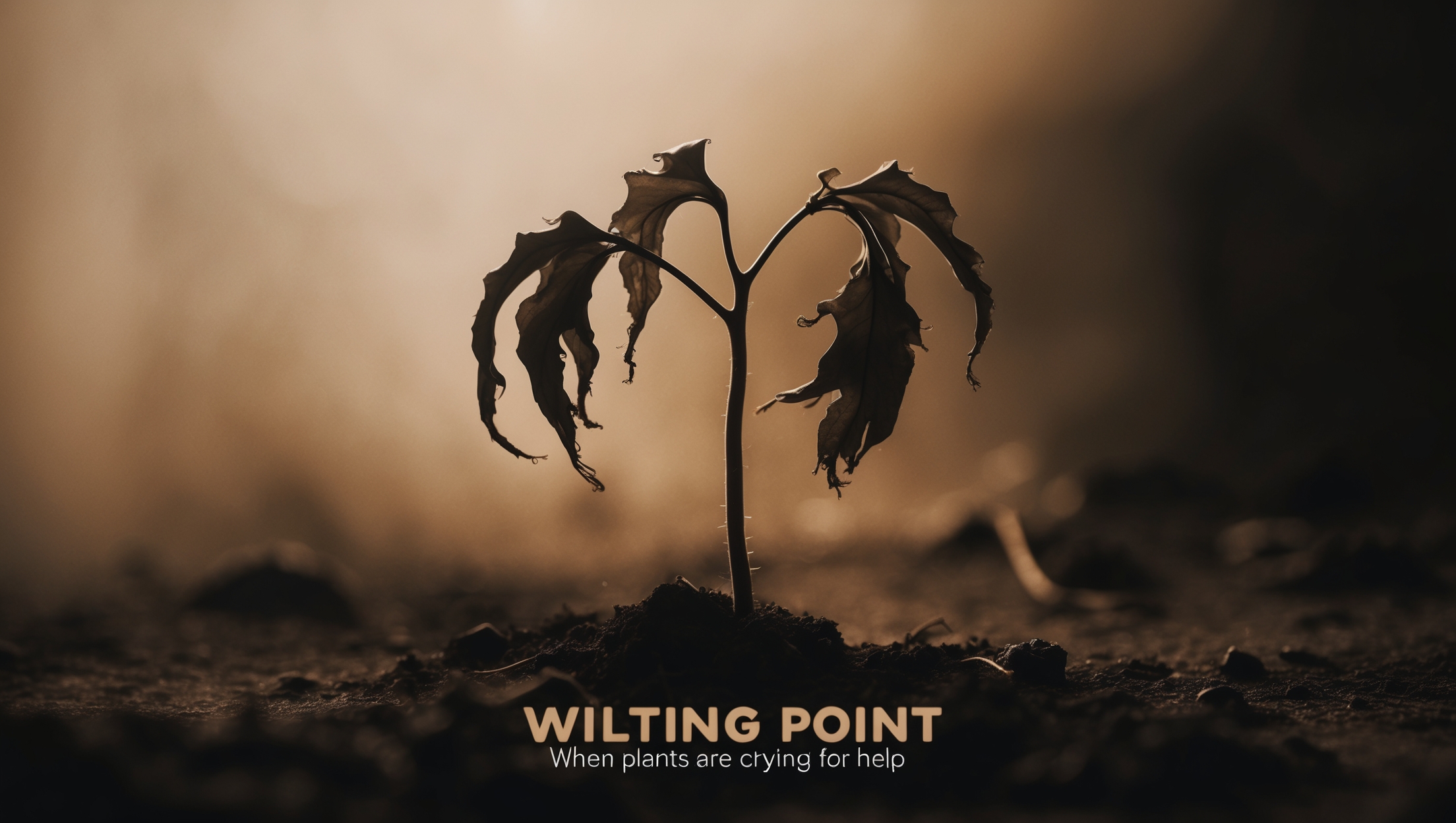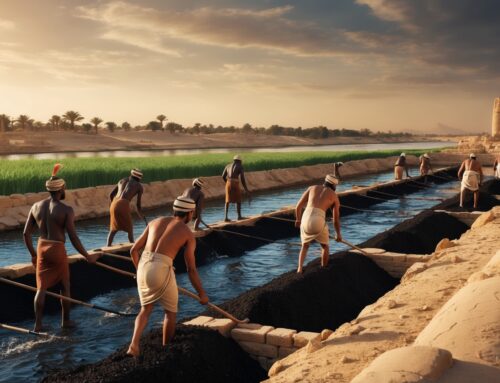Knowing when and how much to water has always been one of the biggest challenges in farming. It’s the difference between thriving crops and a field full of withered plants. In this post, we’re going to dig deep (pun intended!) into two critical concepts in soil moisture management: field capacity and wilting point. These are the two benchmarks that determine the health of your crops, and knowing how to navigate between them can make all the difference.
A Little Farming History: The Battle for Water
Back in the day, before we had fancy moisture sensors, watering was a bit of a guessing game. Farmers relied on experience, gut feelings, and sometimes even the classic “stick your finger in the soil and see if it feels dry” method. If you’ve ever heard an old-timer say, “I can tell it’s time to water by the way the soil smells,” well, they weren’t entirely wrong. There’s a lot of wisdom in that kind of know-how, but times have changed, and so has the climate.
With the unpredictable weather that modern farmers are dealing with—droughts one season, torrential downpours the next—traditional methods just aren’t cutting it anymore. This is where understanding field capacity and wilting point comes in handy. Knowing these key parameters can help farmers decide exactly when to water and how much is enough, saving both crops and resources.
What is Field Capacity?
Field capacity is the amount of water that remains in the soil after it has been fully saturated and allowed to drain naturally. Imagine a rainstorm soaking the ground. As the water seeps into the soil, some of it drains away due to gravity. The water that stays behind is what we call field capacity. It’s the sweet spot where plants have all the moisture they need without any excess causing issues like root rot.
Think of it like a sponge—if you dunk a sponge in water and let it drip until it stops, the moisture it holds at that point is similar to the soil’s field capacity. For a farmer, knowing the field capacity means knowing that your crops have enough water without drowning them. It’s that balance that leads to healthy roots and strong growth.
Field capacity is influenced by a variety of factors, including soil type, organic matter, and the structure of the soil. Different soils, such as sandy, loamy, or clay soils, will hold water differently. Sandy soils, for instance, have larger particles and allow water to drain more quickly, meaning their field capacity is lower compared to clay soils, which retain water longer due to their fine particles. Understanding these differences can help farmers make better irrigation decisions tailored to their specific soil type.
Another important aspect of field capacity is that it helps in maintaining nutrient availability. When soil is at field capacity, nutrients are more readily available for plant uptake, promoting healthy growth. Overwatering can wash away essential nutrients, while underwatering can limit their availability, leading to nutrient deficiencies. By staying at or near field capacity, farmers can ensure that their crops are getting both the moisture and nutrients they need for optimal growth.
Field capacity isn’t just about water—it’s about creating an environment where roots can breathe too. When soil is saturated beyond field capacity, air pockets get filled with water, depriving roots of oxygen. This can lead to root rot and other problems. Maintaining field capacity ensures that there is enough water for plants while still allowing air to circulate in the root zone. It’s a delicate balance, but one that pays off with healthier, more resilient crops.
For a farmer, understanding and managing field capacity can be the difference between a good harvest and a great one. It’s about giving plants what they need, when they need it, without the guesswork. With tools like Terrestream’s Irrigauge sensors, farmers can accurately monitor soil moisture and maintain optimal conditions, ensuring their crops thrive.
Wilting Point: When Plants Are Crying for Help
On the other side of the moisture spectrum, we have the wilting point. This is the level at which there’s so little water in the soil that plants can no longer extract it, and they start to wilt. If you’ve ever seen a sad, drooping plant and thought, “I should’ve watered that yesterday,” you’ve seen wilting point in action.
At the wilting point, the moisture in the soil is so tightly bound to the soil particles that plant roots just can’t access it anymore. It’s like trying to sip the last drop of a thick milkshake through a straw—it’s technically there, but good luck getting it! This is the point of no return for many plants; if they stay in this state too long, they won’t recover even if you add water later.
Wilting point varies depending on the type of soil. Sandy soils, which drain quickly, reach their wilting point much sooner compared to clay soils, which hold onto water longer. This means that farmers working with sandy soil have to be particularly vigilant to avoid letting moisture levels drop too far. Clay soils, on the other hand, may provide a bit more of a buffer, but they also have their own challenges, such as becoming too compacted and restricting root growth if left too dry for too long.
The timing of reaching the wilting point also depends on external factors like temperature and wind. On hot, windy days, plants lose moisture more quickly, and the soil can dry out faster than expected. It’s not just about what’s happening underground—what’s happening above ground can have a major impact too. Understanding this interplay between soil type, weather conditions, and moisture levels is crucial for keeping plants happy and healthy.
Farmers who understand wilting point can take steps to avoid reaching it. Mulching is one effective way to help retain soil moisture, as it reduces evaporation and keeps soil temperatures more consistent. Using cover crops can also help keep moisture in the soil, acting as a natural shield against the sun and wind. By using these methods along with accurate moisture data from sensors like Terrestream’s Irrigauge, farmers can avoid the dreaded wilting point and keep their crops flourishing.
One humorous story I remember involves a farmer who thought he could push his luck with wilting point. He’d always say, “Plants are tougher than we think—they’ll bounce back!” Well, one particularly hot summer, he decided to test his theory. Unfortunately, his tomatoes didn’t get the memo. By the time he realized his mistake, it was too late—the tomatoes had turned into shriveled little raisins on the vine. The lesson? Plants might be resilient, but they’re not invincible. Understanding wilting point is all about knowing when to act before it’s too late.
Staying Between Field Capacity and Wilting Point
So how do you keep your crops happy, healthy, and perfectly watered? The goal is to maintain soil moisture somewhere between field capacity and wilting point. Water too much, and you end up wasting resources, risking disease, and causing nutrient runoff. Water too little, and you’ll end up with sad, wilting crops that can’t reach their full potential.
This is where soil moisture sensors, like Terrestream’s Irrigauge, really shine. By providing precise readings of soil moisture levels, these sensors help farmers stay within that ideal range. No more guessing, no more finger-in-the-dirt tests—just accurate, reliable data that keeps your fields at their best.
Temperature: The Unsung Hero (or Villain) of Moisture Management
But wait, there’s more! Temperature also plays a huge role in how much water your soil can hold and how quickly it’s available to plants. Hot weather can cause soil to dry out faster, while cooler temperatures can keep moisture locked in. Soil temperature affects not only the water retention but also the rate at which plants can absorb nutrients, making it a crucial factor in overall plant health. When temperatures are high, soil microbes become more active, breaking down organic matter more quickly and potentially depleting nutrient availability. Conversely, cooler soil temperatures can slow down plant growth by limiting nutrient uptake.
That’s why Terrestream’s Irrigauge sensors also measure soil temperature. By factoring in temperature, you can make smarter decisions about when to water—because what works on a cool morning might not be enough on a blazing hot afternoon. For example, on extremely hot days, it might be better to water in the early morning or late evening to reduce evaporation and ensure that the moisture reaches the root zone effectively. In cooler weather, watering can be more spread out, as the soil retains moisture for longer periods.
Temperature fluctuations can also cause stress to plants, especially if they experience rapid changes. By monitoring temperature alongside soil moisture, farmers can better predict these stress points and take preventive measures. Terrestream’s Irrigauge helps farmers not only manage water more efficiently but also adjust their irrigation practices to match changing temperature conditions, ultimately leading to healthier crops and more stable yields.
A Funny Thing About Overwatering…
Let’s take a moment to talk about overwatering. It’s like the classic “too much of a good thing” scenario. I remember hearing a story from a fellow farmer about his neighbor who got a bit too enthusiastic with his new irrigation system. Every morning, like clockwork, the sprinklers went on, rain or shine. His field was so wet, ducks started landing there! Needless to say, his plants didn’t make it. The moral of the story? More water doesn’t always mean better results.
Understanding field capacity helps prevent overwatering disasters like that. With the Irrigauge, you’ll know when your soil has hit that perfect moisture level and when it’s time to take a break from watering.
Conclusion: Knowledge is Power
The concepts of field capacity and wilting point might sound technical, but they’re actually the keys to making your farm more





